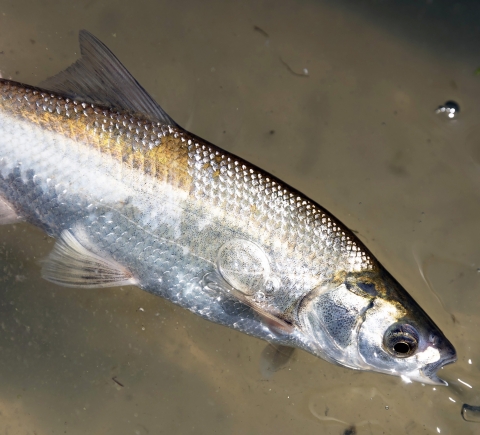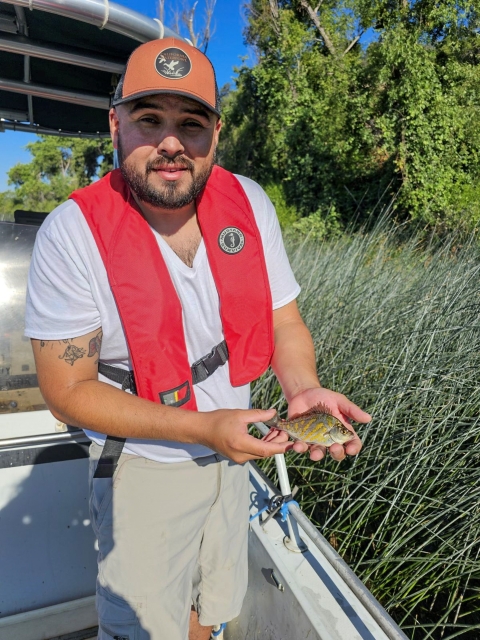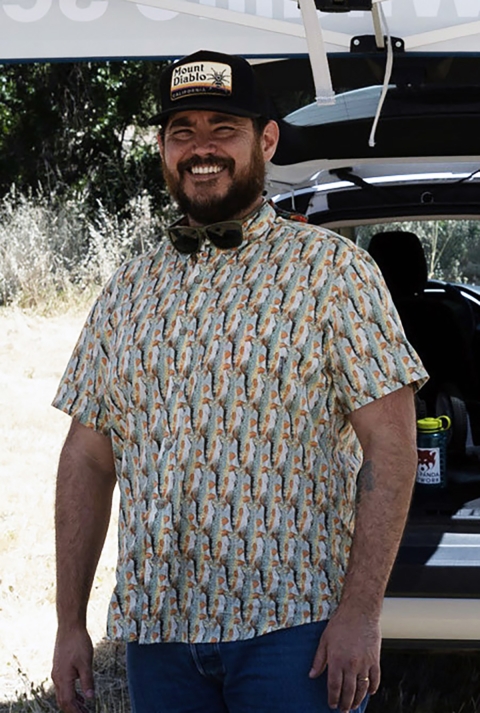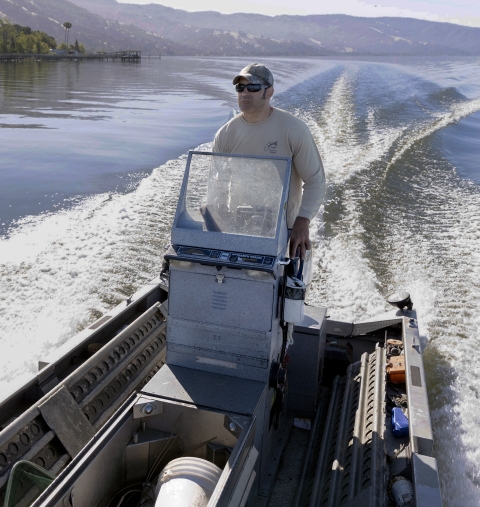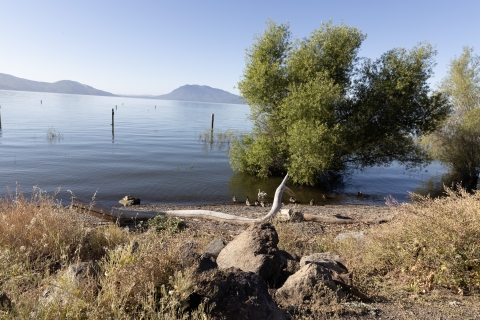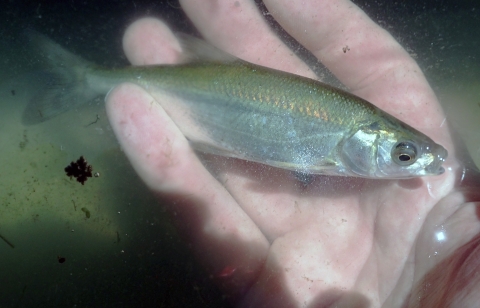Recovering populations of Clear Lake hitch isn’t just a goal for the Robinson Rancheria Pomo Indians of California; it’s critical to their culture and way of life.
Luis Santana, a fish biologist with Robinson Rancheria explains the importance of this species as subsistence to the tribe with his own personal challenge to eat what is genetically good for his body.
“My ancestors are from central Mexico, and so when I did my genetic analysis on what I should be eating it came back - venison, a lot of zucchini and a lot of berries, and I do eat that stuff, but not often enough,” he said.
While historically a form of subsistence, Santana acknowledged the multiple cultural benefits of the fish to the tribe. “Getting back to more fish would obviously help because it’s a lot healthier and better for the people, but what I’d like to emphasize is how critical our efforts are now and in the future to preserving the hitch for future generations for the mental and spiritual benefits to the tribe.”
The importance of Clear Lake hitch to local Tribes has given momentum to recent efforts to increase the populations of this native fish through several habitat restoration efforts. These efforts take cooperation, collaboration and, of course, funding.
According to Jerrod Sellers, a fish and wildlife biologist with the U.S. Fish and Wildlife Service’s Sacramento office, there is hope that improving habitat for the fish can also help improve the health of the lake.
“The hitch is the canary in the coal mine for Clear Lake,” he said.“My role is to work with all partners, including the Tribes, to look at the science and make recommendations on habitat restoration projects or data collection efforts that could help the hitch.”
Working with partners to implement habitat restoration projects, such as the project at Scott’s Creek, is critical to making a difference, per California Department of Fish and Wildlife biologist Ben Ewing.
“Partnerships are very important – the number one priority – because there's strength in numbers,” said Ewing who covers Amador, Calaveras, Alpine and Lake counties.“It's a huge undertaking. The more people who can help and contribute knowledge and time to projects is priceless.”
Projects that restore the floodplain, create additional habitat and bring back native vegetation can improve spawning conditions for the hitch.
“The hitch need the right habitat in the tributary channel to spawn,” Sellers said.
One such partnership project that has received funding is the Tejada Ranch Habitat Management Project, a National Fish Passage Program project funded through the Bipartisan Infrastructure Law Bipartisan Infrastructure Law
The Bipartisan Infrastructure Law (BIL) is a once-in-a-generation investment in the nation’s infrastructure and economic competitiveness. We were directly appropriated $455 million over five years in BIL funds for programs related to the President’s America the Beautiful initiative.
Learn more about Bipartisan Infrastructure Law to modify channels on a stream bank and remove deposited debris. This work aims to help larval hitch reach Clear Lake or refugial pools until there is enough flow in the tributaries to move them into the lake.
“This effort showcases a really great partnership effort with the Service, the Robinson Rancheria Tribe and a private landowner,” said Alex Jones, a Fish and Aquatic Conservation biologist and Culvert Aquatic Organism Passage Coordinator with the Service. “We hope this will help us build momentum for other local landowners to see the great work done and want to improve hitch habitat on their land.”
Ultimately, the partners hope this work will reduce the number of hitch stranded in isolated pools when tributaries rapidly dry up during spawning season. Over the past few years, Santana and his team have rescued hundreds of stranded fish and returned them to the lake. With this restoration project, the fish will be able to follow their natural life cycle to migrate up the tributaries and then return to the lake after spawning. In addition to benefits directly to the fish, this project will also reduce the issue of the streambank encroachment onto private land.
Santana and partners teamed up with the Habematolel Pomo of Upper Lake on another restoration project to clear non-native blackberries and other invasive plant species from a tributary that the hitch use for spawning. “As you clear the invasive plants, the native plants come back,” he said. “Once natives come back thick and plentiful, then we’ve done our job at that site.”
Along those same lines, invasive fish species such as carp and goldfish are also problematic. “We can no longer just focus on the lake. We have to look at the ponds and lakes upstream, too,” said Santana.
“Hitch are really important to me. I love fish - it’s what I built my career around. So, if I can save hitch here and give back to the community who raised me, that’s great.”


